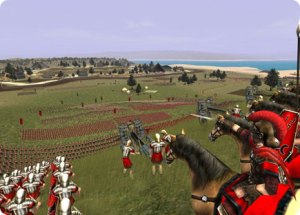Listen to the Radio Show of this Blog
Last month we looked at competitive differentiation and emphasized the importance of Competitive Value Discovery as fund amental. It helps you discover value potential over your competitors. Finding value that the Customer had never thought of before is competitively differentiating. Also, whether it’s your existing customer or you are trying to secure a new client, they always weigh your value against your competitors’. Focused Value Discovery helps you gain greater control over what they weigh, how they weigh it and, as importantly, what the competition is doing in the same regard so that we can counter such tactics. So, if we have far better intel and a better sense of the client’s changing priorities we can work both offensively and defensively to influence their Decision Guidelines.
amental. It helps you discover value potential over your competitors. Finding value that the Customer had never thought of before is competitively differentiating. Also, whether it’s your existing customer or you are trying to secure a new client, they always weigh your value against your competitors’. Focused Value Discovery helps you gain greater control over what they weigh, how they weigh it and, as importantly, what the competition is doing in the same regard so that we can counter such tactics. So, if we have far better intel and a better sense of the client’s changing priorities we can work both offensively and defensively to influence their Decision Guidelines.
In sum, you need to gain the high ground
What have you chosen for us this month?
This month I want to explore why planned and focused value discovery is vital to creating and implementing a successful sales strategy. Aligning where you are going with your resources gives you the best chance for creating new or additional revenue sources. This means being competitively clear about how you are going to choose the products (or services) you want to build. For instance:
- Build the product you want to build,
- Market the product you want to build,
- Sell the product you want to build,
- Service the product you want to build
- Build the next generation
Determining where to differentiate based on market conditions is a strategic value conversation. You have to know your products as well as you know your competitor’s. Then determine strategically where competitors are most vulnerable and how to deliver those messages. You must regularly test your premise with the customer…
How easy is it to find out how your competitor is differentiating themselves?
Not easy! Sure, hard product functionality is on their website – that’s the easy bit. It’s difficult because most think each competitor is static and consistent – but they are not! Many competitors don’t even behave the same between their different regions or divisions. For example, a competitor can be your partner in one geography, yet be your competitor in another. Typically, this occurs in IT. So, what they do in Idaho is often very different than what they are doing in Chicagoland. With one client, we helped them find out that a technology partner was in fact competing against them using two strategies. The first was in schools districts and the second in State Government. They were losing 8/10 sales to them. After we determined this we helped them reverse that condition.
Why do so many companies fail to recognize such competitive strategies?
Because they don’t have the focus, processes and ability to read their competitive environments. Such signals are not easy to read: they are weak ambiguous, and need deciphering. Only a systematic and aligned process can decipher competitive signals early enough to make a difference.
 It is difficult. First, top management is never close enough to the market. Second, some top executives can’t see competitive reality. Somehow they become insulated from competitive reality by relying on intelligence that is invariably biased, subjective, filtered or late.
It is difficult. First, top management is never close enough to the market. Second, some top executives can’t see competitive reality. Somehow they become insulated from competitive reality by relying on intelligence that is invariably biased, subjective, filtered or late.
By the time most executives get evidence of changes in their markets, they have already lost touch with customers, technology, competitors, suppliers, government and the other forces operating to squeeze their profits.
The question is, if you do nothing, what are the competitive consequences? Without taking specific preventive measures, such as ensuring that top managers consider competitive information in making decisions, companies will be hit on the head by change – time and again.
You may be thinking, who has the time to continually and systematically identify such signals early? Who has the expertise to attempt to decode all of them? The answer is: Your people – those who are in daily touch with the competitive arena.
Survival depends on competitive agility when facing changes in the environment by:
- Continuously moving on three fronts – content, context and process
- Being unpredictable and so easily identifiable to your competition
- Being experimental
To compete in unstable markets you need to be competent in two things:
- Identifying and understanding the competitive forces at play and how they change over time, linked to
- Mobilizing resources to respond competitively
How do you get this flow of competitive intelligence to decision makers?
The Five Aspects of Competitive Strategic Change
Our uncertain environment means strategic change involves parallel streams of activity. There is no easy logic; It’s more like brewing a culture– like beer. It’s a difficult complex process where a manager’s ability to cope with ambiguity is paramount.
It’s not surprising then that higher performing firms handle five interrelated aspects of strategic change better:
1. Assessing the Competitive Environment
2. Leading Competitiveness
3. Linking Strategic & Operational change
4. Learning Competitively
5. Orchestrating Competitive Change
Let’s look at the first of these five.
1. Assessing the Competitive Environment
The firm has to be an open learning system and not reliant on one specialist function.
As Romme (1989) puts it:
“There is the problem of not only environmental “sensing”, but also “sense-making””And sensing tends to be by individuals whereas sense making nearly always involves collective processing…
Successful competitive sensing and sense making is requires:
- Key people to champion assessment techniques which increase openness
- Both structure and culture to encourage environment-facing behaviors
Even with these factors are present there is no guarantee anything will change without actions which stabilizes and drives this assessment capacity forward. .
Presumably, this means leadership style has to change?
2. Leading Change
I agree, it’s not is not just ensuring that the environment is understood; the vital need is to ensure that the organization learns and acts on new information that requires courageous leadership. The leadership challenge is that unpredictability makes the prospect of greater control remote. So, big initiatives in themselves are of limited value and may well be dangerous. Paradoxically, effective leadership relies on the gradual and modest. This includes assessing, for instance, through “problem-sensing” and “climate-setting” management can assess the political implications of a competitive strategy. Effective leadership relies on shaping a long term process rather one direct initiative. These processes have to encourage analysis and actions which are sensitive to changing circumstances.
Competitive research suggests that leading an organization through change does not imply reliance on one leader. Great emphasis in those organizations studied was placed on:
- Creating a broader notion of collective leadership at higher levels
- Embedding a complimentary sense of leadership and responsibility at lower levels

Leaders need to be “Radical Gradualists,” knowing where they need to go using incremental and unspectacular steps.
It involves integrating competitive actions at all levels.
Building a climate for leading change also needs to raise energy levels and set new directions. The conditions needed are:
- Showing why the changes are needed
- Building the organizational capabilities to mount the change
- Establishing an agenda which sets direction, visions and values
What’s the next challenge for becoming more competitive?
3. Linking Strategic & Operational Change
The cumulative effect of separate acts can be powerful. As Pettigrew & Whipp puts it:
“Translating strategy into operational action does not occur by a neat sequence of steps to a logical outcome; it may include…iterative actions in order to break through ignorance or resistance; it often requires…aborted efforts and the buildup of slow incremental phases of adjustment which….allow short bursts of concentrated action…”
You need to focus on:
- Opening up people to reach closure on what worked in the past and reinforce the changes that need to be made
- Sustaining speed, intensity and momentum of the process
- Recognizing that re-formulation of the strategy will occur – Set the expectation that you can’t to get it right first time
- Translating strategic intent into operational reality – WIIFM
Then, new knowledge and insights gained during implementation of a strategy can be captured, retained and disseminated. So, replicate success and avoid failures better than you competition
I am curious to learn about the next step
So, the next step is about the organization’s ability to keep learning about its competitive surroundings
4. Competitive Learning
Peter Senge defined learning organizations as:
“Organizations where people continually expand their capacity to create the results they truly desire, where new and expansive patterns of thinking are nurtured, where collective aspiration is set free, and where people are continually learning to learn together.”
Competitive learning organizations need to create positive learning spirals that:
- Develop the value of competitive knowledge as a key differentiating weapon
- Facilitate learning that generates, maintains and regenerates that knowledge
- Find ways of exposing knowledge locked-up in the procedural repertoires of the firm
- Ensure that the knowledge base of the firm matches changing competitive conditions
Competitive learning spirals involve observation, reflection, hypothesizing, experimentation, action and “hands-on” application. What is learned has to be codified and diffused.
Such spirals are team based. People collectively developing their knowledge, values and shared mental models of their competitive environment. It goes beyond training. The need is for a much broader approach which embraces “play experimentation”, developing appropriate language as well as reshaping attitudes and values.
Often overlooked, is the need for breaking down entrenched knowledge and beliefs – “unlearning”. – Shedding outmoded knowledge, techniques and beliefs, and then learning new ones to carry out strategies is crucial. The ability to do so faster and more effectively than your competitors becomes almost priceless!
How do Leaders juggle all of this?
5. Orchestrating Competitive Change
It’s about holding a firm’s strategic thinking together, while carrying out the reshaping and adjusting which new or emergent strategies demand. Research shows the need for competitive integrity between the strategic competitive position adopted by the firm, the internal resources and external collaborators
Such orchestration is not easily attained or maintained. It means solving analytical, educational and political problems.
The problem of orchestration lies in the divergence between official goals and more routine decisions. As Kanter (1983) says, “there are many rules for stifling innovation”. These include multiple layers of managerial approval; intensive controls; secretive decision making; and suspicion of new ideas. In other words, corporate contradictions prevent change – the formidable obstacles to which many give little attention.
Are there any other aspects which leaders should consider when conducting competitive change?
Developing Competitive Networks
A key aspect is developing competitive networks. It’s investing in networks to build up, for example, a set of complimentary assets which it needs in order to exploit its knowledge base.
Networking focuses on developing relationships between your firm and others which are directly concerned with generating new intellectual capital (IP) For example, sharing life science research with a collaborator. Each has one piece of the puzzle, so they build a database by sharing intellectual property.
It also is about developing relationships which affect the firm’s process of generating and altering its knowledge indirectly. An example here is with data centers and different IT firms used to support the customer’s service in that data center.
Developing such networks requires learning local cultural and market conditions, techniques of partnering, negotiation skills and collaboration. Such networks are often invisible assets which cannot be readily purchased and controlled.
So, I guess the real question is how well an organization develops its competitiveness by being better at discovering customer values and then aligning their organizations and partners to meet those demands. Right?
Competitive Value Discovery is the tip of the spear targeted and driven by superior focus, processes and leadership that galvanizes the organization. It is sustained by the belief that being competitive is about making sense of changing market conditions, customer needs, priorities and competitive responses.
Competitiveness rests not only aligning such aspects, but also replicating what works over and over again. Can you tell me what those systems are in your organization?
Listen to the Radio Show
[polldaddy poll=4604847]
Great, but how can this help me?
This is probably the first thing on your mind after reading this Blog.
How about asking us? The first call is free! Just email me to set it up.
Don’t wait, get The Crispian Advantage working for you!. If our conversation leaves you needing more,
we offer at a reasonable fee telephone and video coaching improve bottom line results.
If that still doesn’t do it, we’ll work with you on a solution.
[contact-form subject=”Feedback from pdsgroup.wordpress.com” to=”nanderson@pdsgrp.net”] [contact-field label=”Name” type=”name” required=”true” /] [contact-field label=”Email” type=”email” required=”true” /] [contact-field label=”Industry” type=”text” /] [contact-field label=”Feedback” type=”textarea” required=”true” /] [/contact-form]
_______________________________________________________________________________________________________________________________________________________
For Help in Getting Your People on the Same Page
Nick Anderson, The Crispian Advantage
Listen to the Radio Show of this Blog
© Copyright All Rights Reserved, The Crispian Advantage and Walk the Talk – A Blog for Agile Minds, [2010-2012]. Unauthorized use and/or duplication of this material without express and written permission from this blog’s author and/or owner is strictly prohibited. Excerpts and links may be used, provided that full and clear credit is given to Nick Anderson, The Crispian Advantage and Walk the Talk – A Blog for Agile Minds with appropriate and specific direction to the original content.

